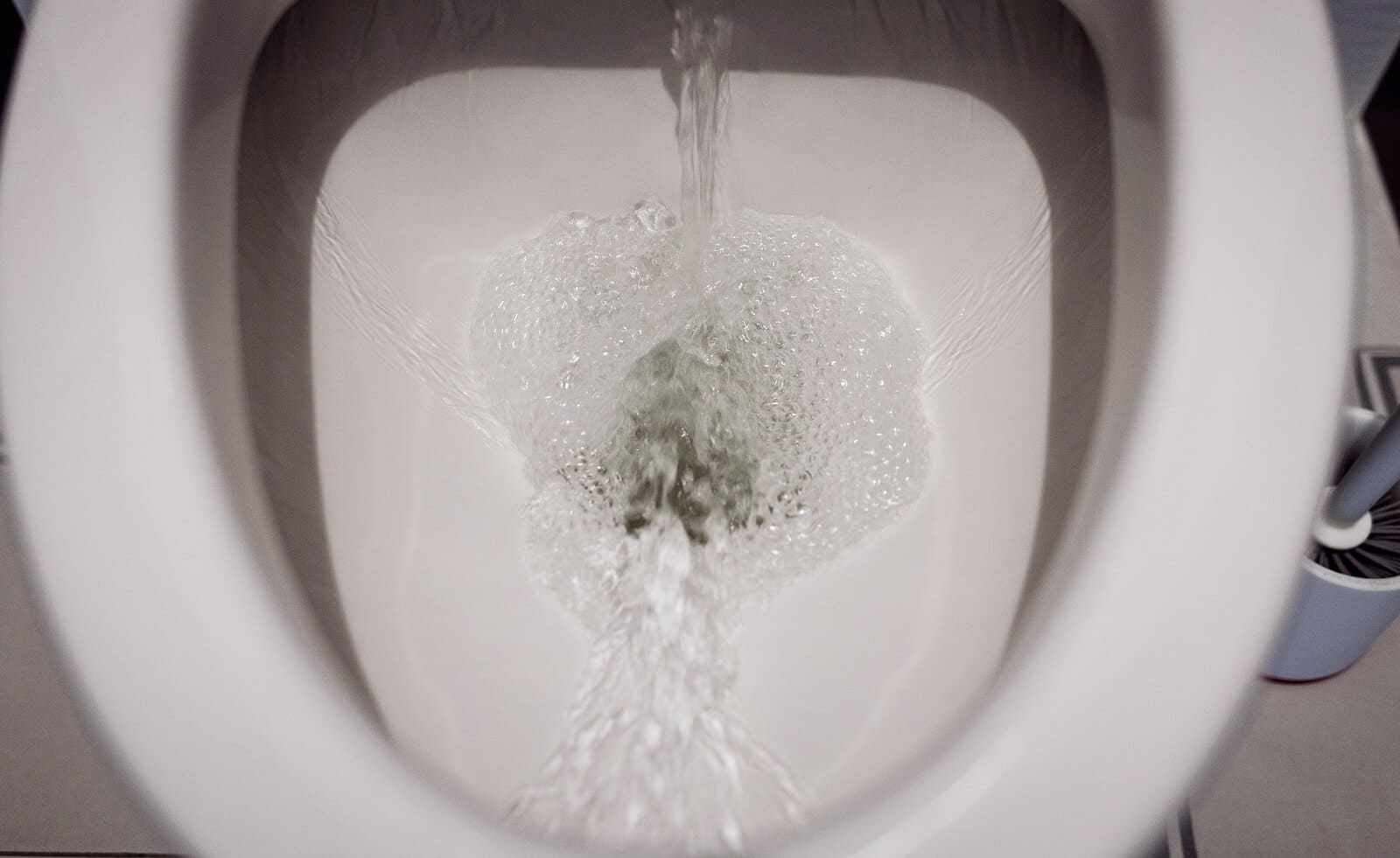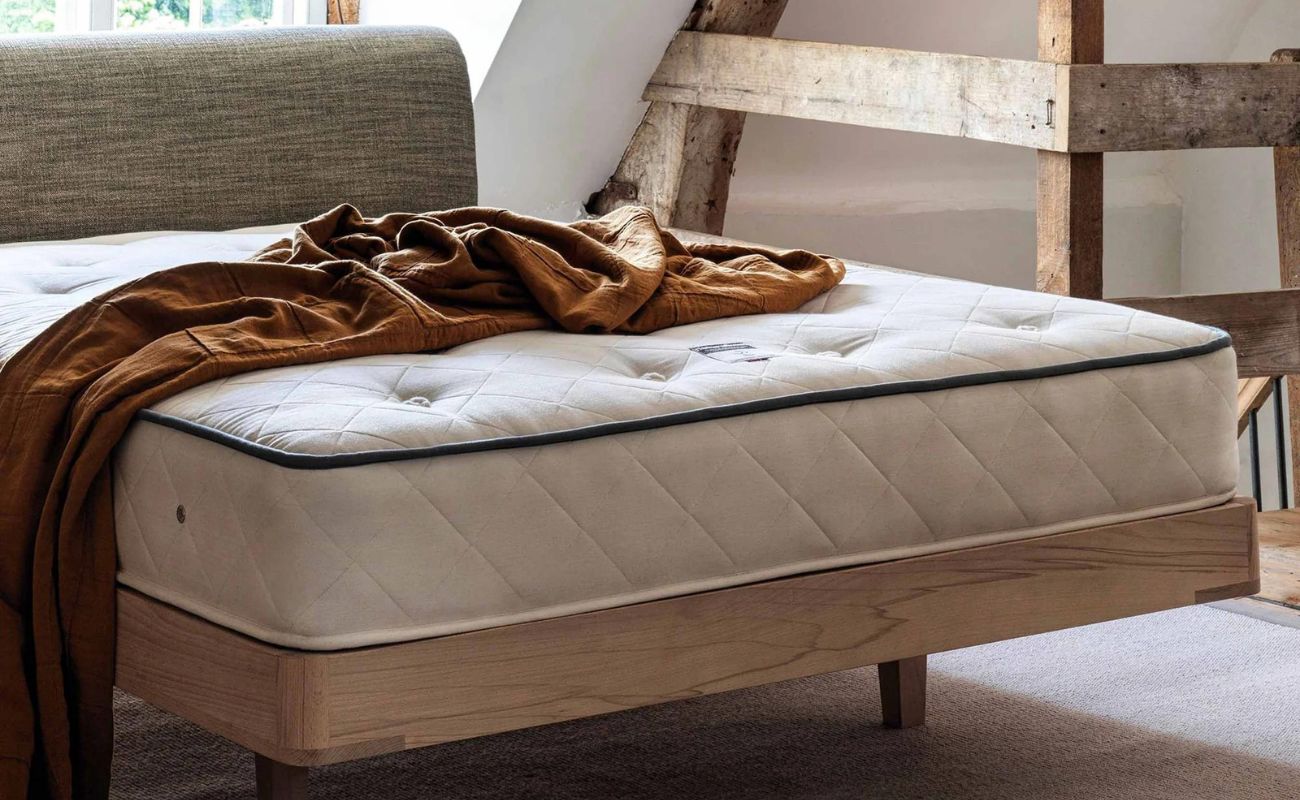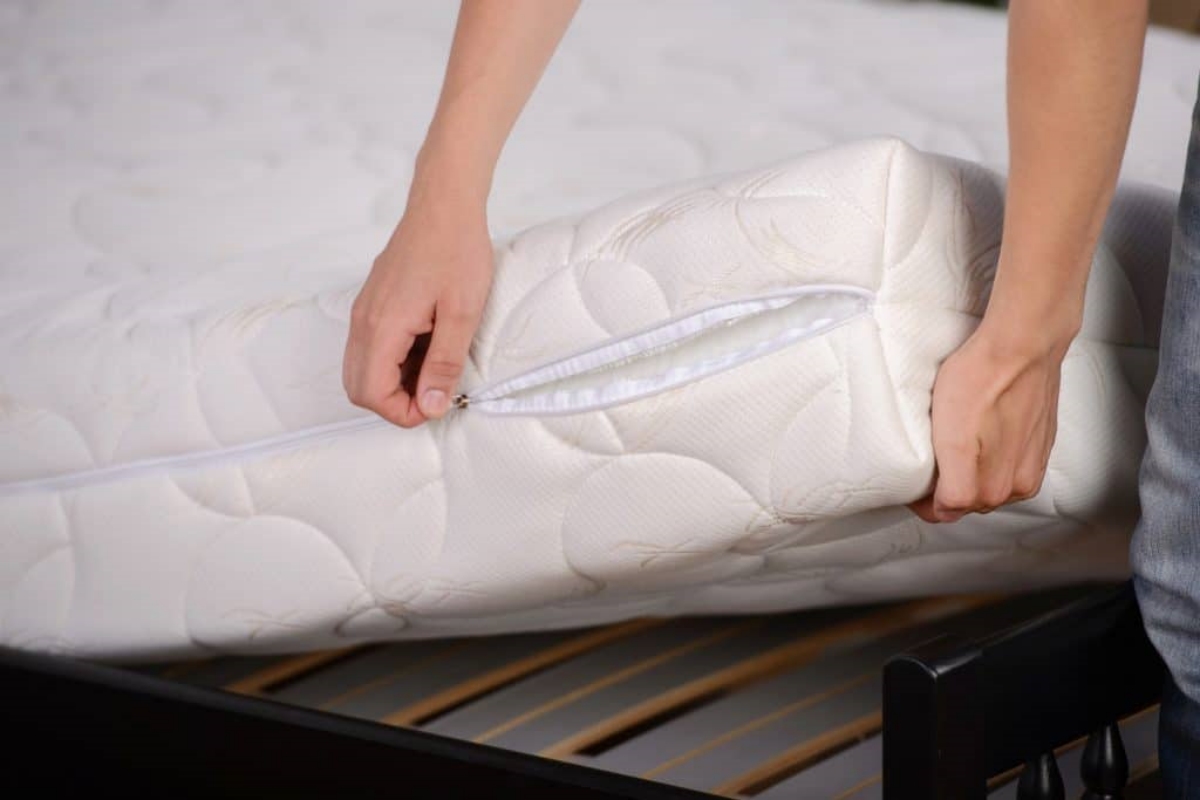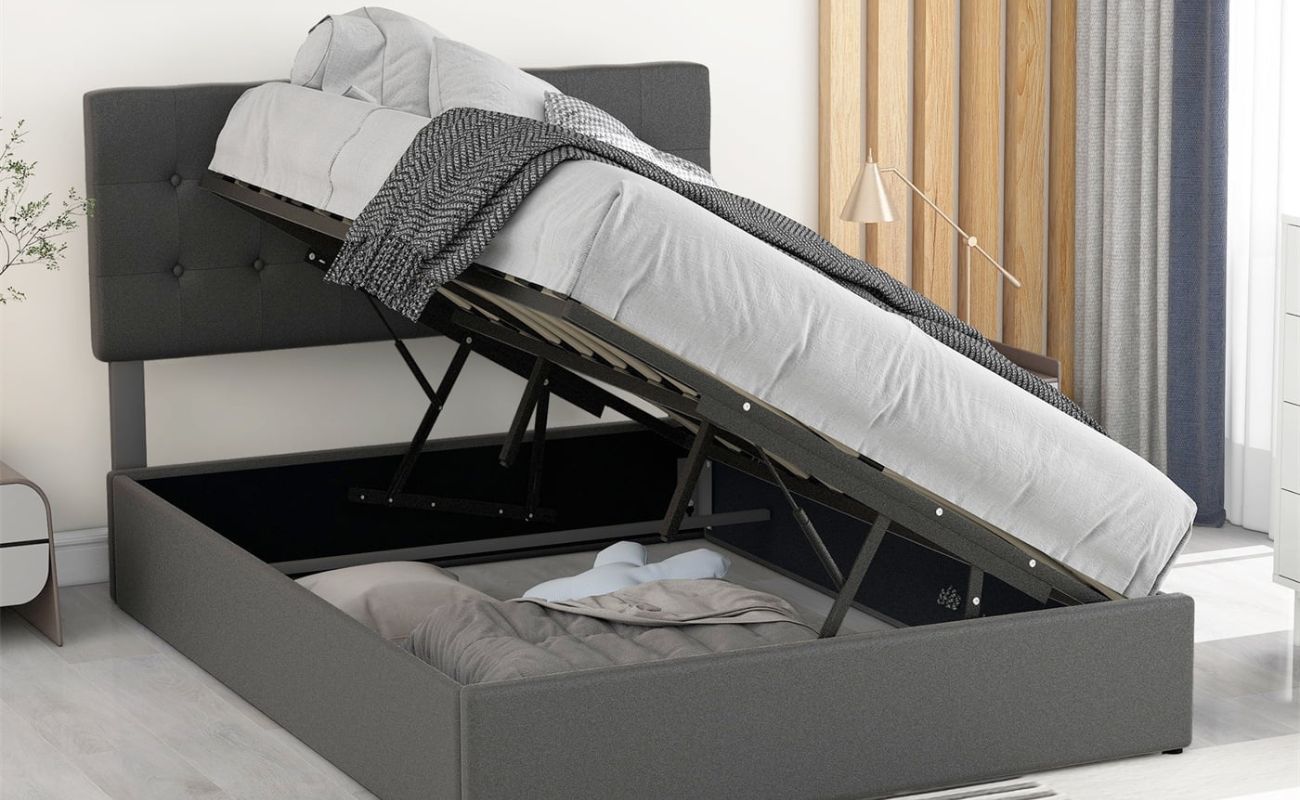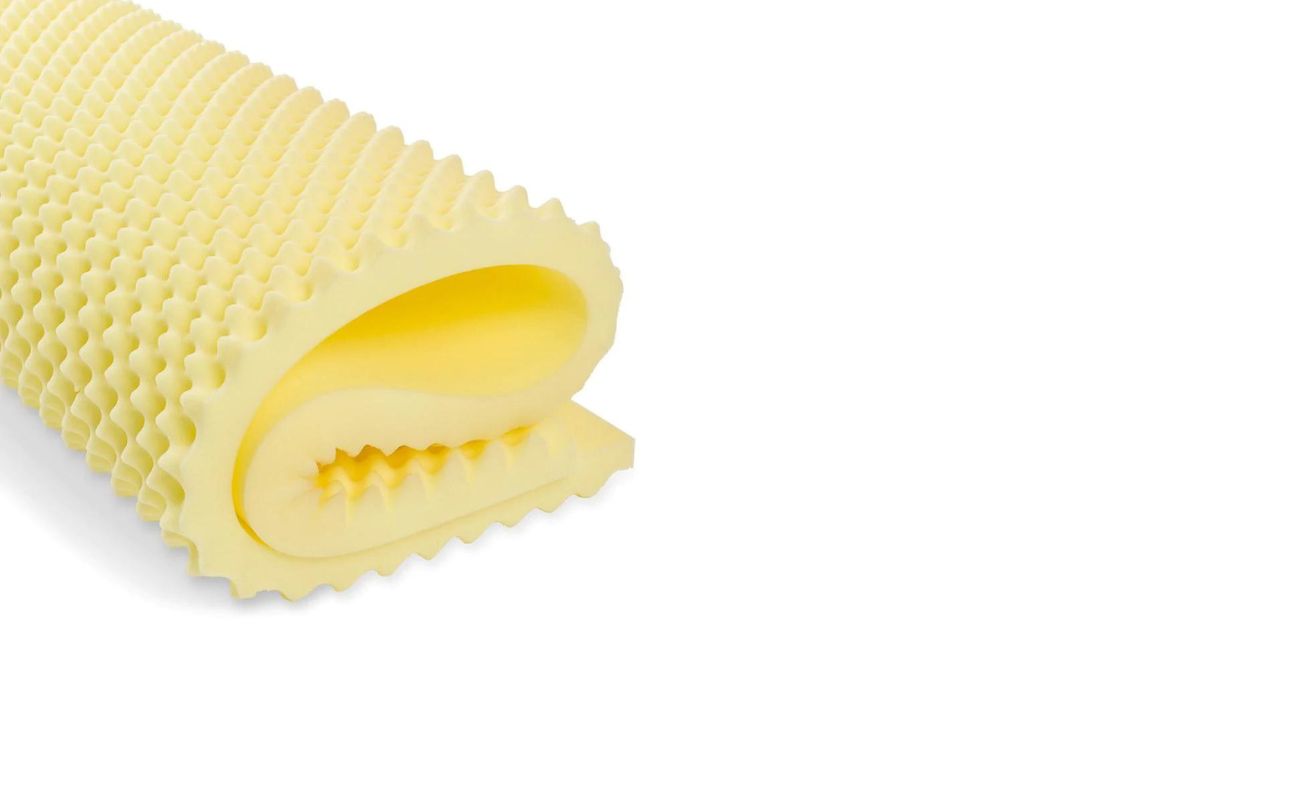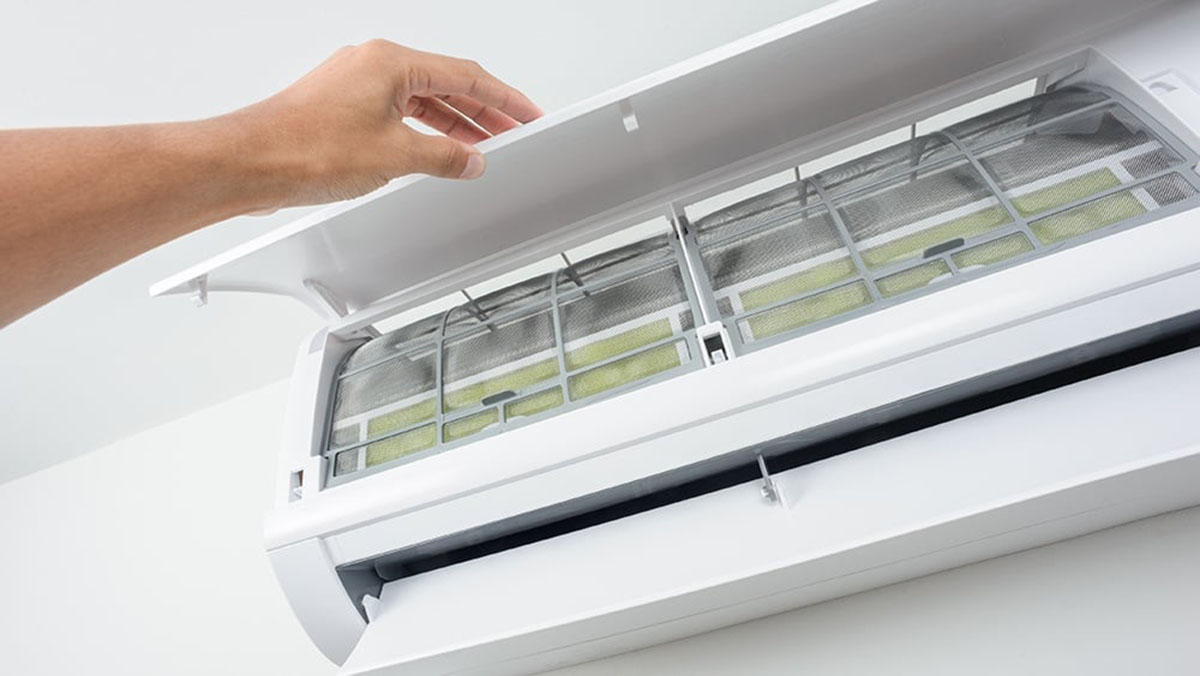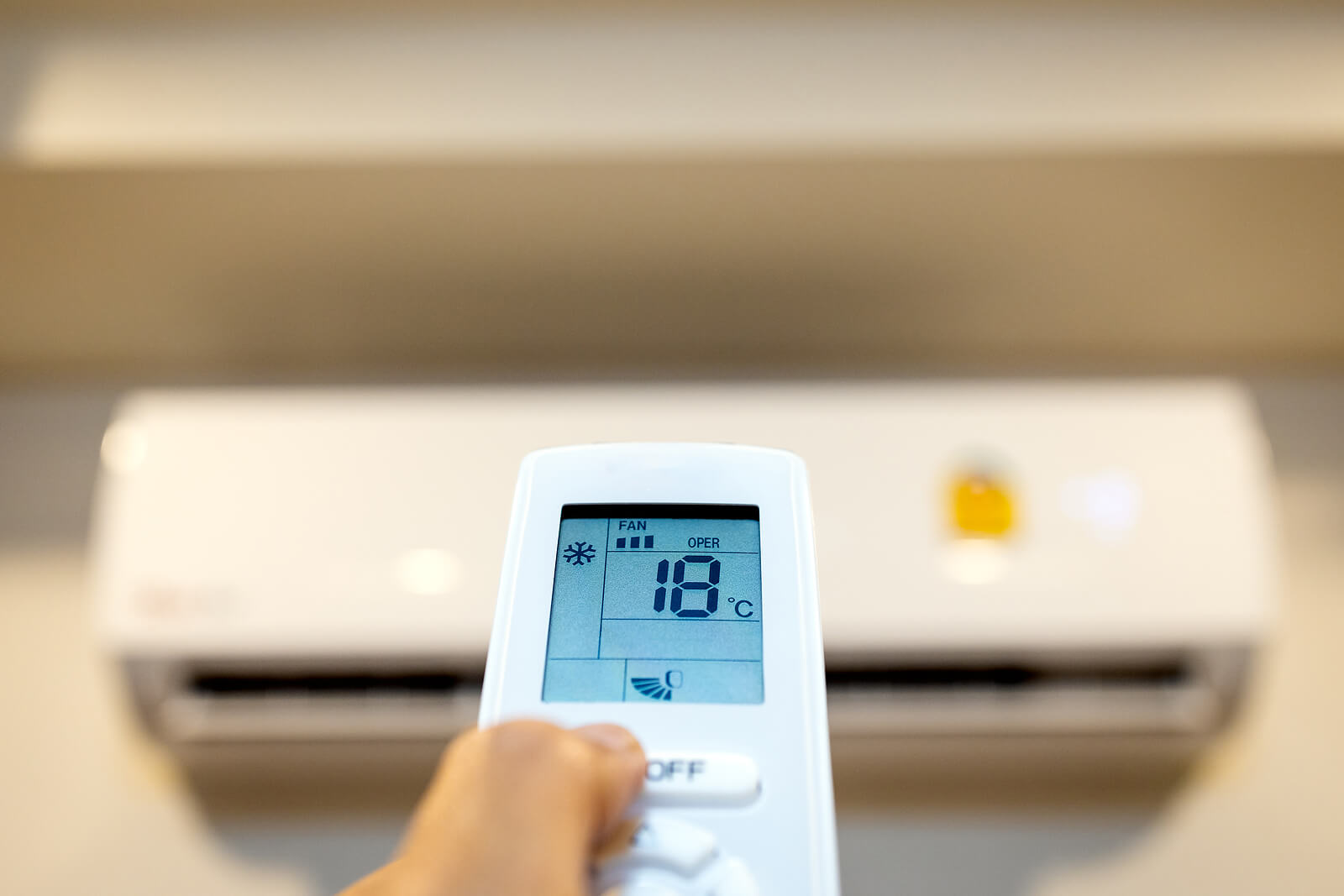Home>Furniture>Bedroom Furniture>Why Is There A Bubble In My Air Mattress
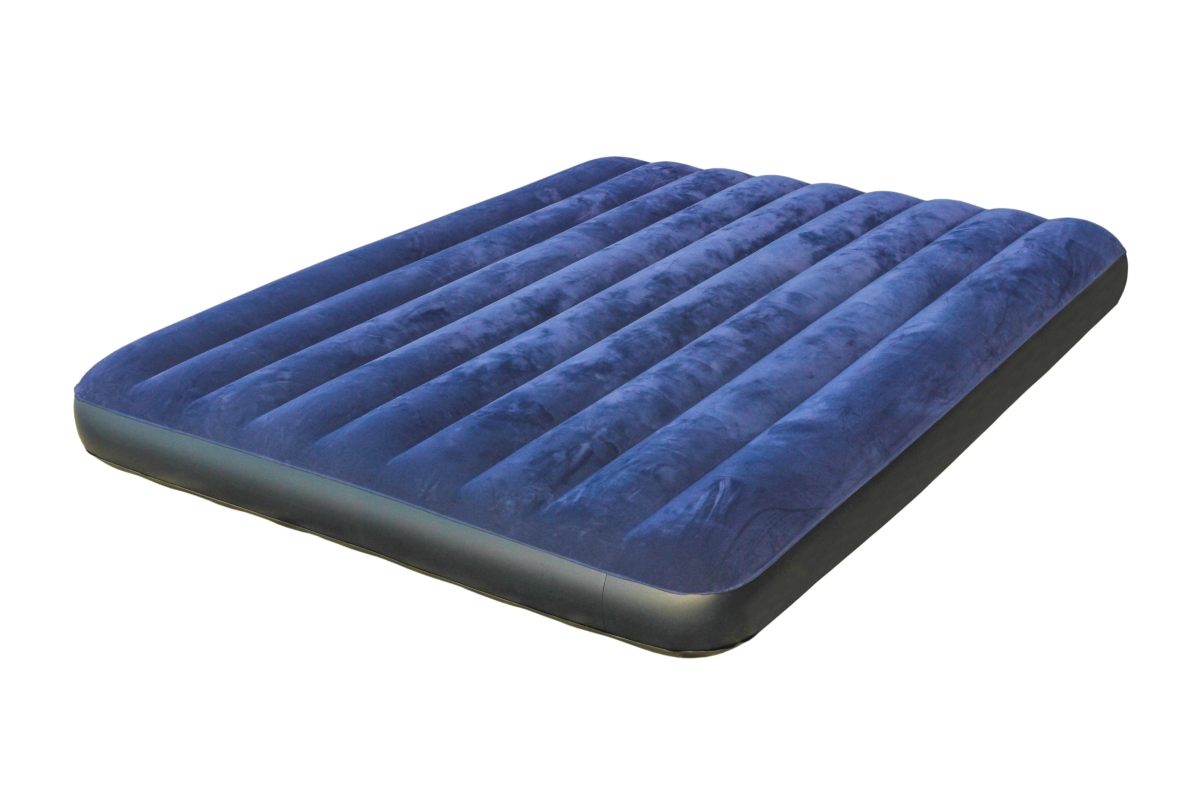

Bedroom Furniture
Why Is There A Bubble In My Air Mattress
Modified: August 23, 2024
Discover why there's a bubble in your air mattress and find solutions to fix it with our expert tips. Explore our wide range of bedroom furniture for a comfortable and restful sleep.
(Many of the links in this article redirect to a specific reviewed product. Your purchase of these products through affiliate links helps to generate commission for Storables.com, at no extra cost. Learn more)
Introduction
Having a comfortable and supportive mattress is crucial for a good night’s sleep. However, when you discover a bubble in your air mattress, it can be quite concerning. Air mattresses, also known as inflatable mattresses, provide a convenient and portable bedding option, whether for camping trips or accommodating guests at home. But what causes these bubbles to form, and how can you fix them?
In this article, we will explore the reasons behind air mattress bubbles and discuss effective ways to resolve this issue. We will also delve into the potential effects of these bubbles on comfort and sleep quality. So, if you are currently dealing with a bubble in your air mattress or want to avoid this problem in the future, keep reading to find out more.
Key Takeaways:
- Proper inflation, regular maintenance, and investing in high-quality air mattresses are essential for preventing and fixing air mattress bubbles, ensuring a comfortable and restful sleep experience.
- Identifying the source of the bubble and addressing it promptly through patching punctures, replacing damaged valves, and following preventive measures can restore the integrity and longevity of your air mattress.
Read more: Why Is My Spackle Bubbling
Definition of an Air Mattress
An air mattress, also known as an inflatable mattress or airbed, is a type of bedding that uses air instead of traditional springs or foam for support. It is typically made of PVC or vinyl material and is designed to be filled with air to create a comfortable sleeping surface. Air mattresses come in various sizes, ranging from small twin-sized mattresses to larger queen or king-sized options.
One of the key features of an air mattress is its portability. Unlike traditional mattresses, air mattresses can be easily deflated and rolled up, making them an excellent choice for camping trips or when accommodating guests. Many air mattresses also come with built-in pumps or can be inflated using external pumps, ensuring quick and convenient setup.
One notable advantage of air mattresses is the ability to adjust the firmness according to personal preference. By controlling the amount of air inside the mattress, users can make it softer or firmer to suit their comfort needs. This customizable feature makes air mattresses an ideal choice for individuals with specific sleep preferences or those seeking temporary bedding solutions.
It is important to note that air mattresses are not intended to replace traditional mattresses for long-term use. While they provide convenience and versatility, they may not offer the same level of support and durability as other bedding options. However, with proper care and maintenance, air mattresses can provide a comfortable sleeping experience for an extended period of time.
Causes of Air Mattress Bubbles
Discovering a bubble in your air mattress can be frustrating and disrupt your sleep. Several factors can contribute to the formation of these bubbles. Understanding the causes can help you address the issue effectively. Here are some common reasons why air mattress bubbles may occur:
- Over-inflation: One common cause of air mattress bubbles is over-inflation. If the mattress is filled with an excessive amount of air, it can create pressure points and cause the material to stretch, resulting in bubbles or bulges forming on the surface.
- Poor-quality materials or manufacturing: Low-quality air mattresses may be more prone to developing bubbles. Inferior materials or subpar manufacturing processes can lead to weak spots or inconsistencies in the mattress, which can result in bubbles forming over time.
- Damaged or worn-out valves: The valve is the component that allows air to enter or exit the mattress. If the valve is damaged or worn out, it may not seal properly, causing air to leak and form bubbles in the surrounding area.
- Punctures or leaks: Any punctures or leaks in the air mattress can allow air to escape and create localized pockets or bubbles. These punctures can be caused by sharp objects, rough handling, or prolonged use without proper care.
It is essential to identify the underlying cause of the bubbles in your air mattress to determine the most appropriate solution. In the following sections, we will discuss the potential effects of these bubbles and explore effective methods to fix them.
Over-inflation
Over-inflation is a common cause of air mattress bubbles. When you inflate your air mattress, it is important to strike a balance between firmness and excess air pressure. Over-inflating the mattress beyond its recommended capacity can lead to the formation of bubbles or bulges on the surface.
When an air mattress is over-inflated, the excessive air pressure inside puts strain on the mattress material. This can cause the material to stretch beyond its intended limits, resulting in weak spots or areas of increased tension. Over time, these weak spots can develop into bubbles or bulges, compromising the overall stability and comfort of the mattress.
To avoid over-inflation, it is crucial to follow the manufacturer’s guidelines regarding the recommended air pressure for your specific air mattress model. Pay attention to the maximum inflation level indicated on the mattress or in the accompanying user manual. Over-inflating the mattress can not only lead to bubbles but also increase the risk of the mattress bursting or developing other structural issues.
Furthermore, be mindful of the ambient temperature when inflating your air mattress. In colder temperatures, the air inside the mattress may contract, leading you to believe that the mattress requires more inflation. However, as the temperature rises, the air inside may expand, causing the mattress to become over-inflated and potentially developing bubbles.
If you notice bubbles forming due to over-inflation, the best course of action is to gradually release some of the air from the mattress until it reaches the recommended pressure level. This will help alleviate the strain on the material and reduce the risk of further bubble formation.
Remember, proper inflation is not only essential for preventing bubbles but also for ensuring optimal comfort and support while using your air mattress. So, take the time to inflate your mattress carefully and avoid over-inflation to maintain its quality and longevity.
Poor-quality Materials or Manufacturing
Another common cause of air mattress bubbles is the use of poor-quality materials or subpar manufacturing processes. When purchasing an air mattress, it is important to consider the quality and reputation of the manufacturer to reduce the likelihood of encountering issues like bubble formation.
Inferior materials, such as low-grade vinyl or PVC, may lack the necessary durability and strength to withstand continuous inflation and deflation. As a result, these materials may develop weak spots or inconsistencies that can lead to the formation of bubbles over time. The use of subpar materials can also negatively impact the overall structural integrity of the mattress, making it more susceptible to damage and air leakage.
Similarly, poor manufacturing processes can result in the creation of air mattresses with defects or weak points. These defects can manifest as areas of reduced thickness or uneven distribution of materials, creating uneven pressure points that contribute to bubble formation.
While it can be challenging to determine the quality of materials or manufacturing methods used in an air mattress, there are a few steps you can take to mitigate the risk:
- Research reputable brands: Look for trusted and well-known brands that have a positive reputation for producing high-quality air mattresses. Reading customer reviews and seeking recommendations can provide valuable insights into the overall quality of the product.
- Check for certifications: Look for air mattresses that have undergone independent testing and certification, such as from organizations like the International Sleep Products Association (ISPA). These certifications indicate that the mattress has met specific quality and safety standards.
- Inspect the mattress: Before making a purchase, visually inspect the air mattress for any visible signs of poor construction or materials. Pay attention to the overall thickness and consistency of the material, seams, and valves.
- Review the warranty: A warranty can provide added assurance of the manufacturer’s confidence in their product. Check the warranty details to understand what types of defects or issues are covered.
By considering these factors, you can increase the chances of selecting an air mattress made with high-quality materials and manufactured with precision. Investing in a reputable brand with good quality control practices can greatly reduce the likelihood of encountering air mattress bubbles resulting from poor materials or manufacturing.
Read more: Why Is My Air Mattress Losing Air
Damaged or Worn-out Valves
The valve of an air mattress is responsible for controlling the flow of air in and out of the mattress. It is a crucial component that ensures proper inflation and deflation. However, damaged or worn-out valves can lead to air leakage and the formation of bubbles.
Over time, continuous use and repeated inflation and deflation can take a toll on the valve mechanism. Excessive force or rough handling while operating the valve can cause wear and tear, resulting in leaks or improper sealing. Additionally, debris, dust, or small particles may accumulate around the valve, affecting its functionality and compromising its ability to maintain a tight seal.
If the valve is damaged or worn out, it may allow air to escape slowly from the mattress, leading to the formation of bubbles in the surrounding area. These bubbles can cause unevenness on the surface and negatively impact the overall comfort and support of the mattress.
To address this issue, you can try the following steps:
- Inspect the valve: Carefully examine the valve area for any visible signs of damage, such as cracks, tears, or deformities. Make sure to clean any debris or particles that may be obstructing the valve.
- Repair the valve: If the damage to the valve is minor, you may be able to repair it using a specialized patch or adhesive designed for air mattress repair. Follow the instructions provided with the repair kit to effectively seal any leaks or small damages.
- Replace the valve: If the valve is severely damaged or beyond repair, you may need to replace it. Contact the manufacturer or a reputable air mattress repair shop to obtain a compatible replacement valve.
Replacing a valve in an air mattress requires careful attention to detail and following the manufacturer’s guidelines. If you are not confident in your ability to replace the valve yourself, it is recommended to seek professional assistance to ensure a proper and secure replacement.
Regularly checking the condition of the valve and keeping it clean can help prevent damage and ensure the longevity of your air mattress. By maintaining a functional valve, you can minimize the risk of air leakage and the formation of bubbles, thereby preserving the comfort and performance of your mattress.
Punctures or Leaks
Punctures or leaks in an air mattress are a common cause of air mattress bubbles. These punctures can occur due to various reasons, such as sharp objects, rough handling, or prolonged use without proper care. Regardless of the cause, any opening in the mattress’s surface allows air to escape, leading to the development of localized pockets or bubbles.
Identifying and addressing punctures or leaks is crucial for maintaining the functionality and comfort of your air mattress. Here are some steps you can take to fix this issue:
- Locate the source: Start by inspecting the surface of your air mattress to identify the location of the puncture or leak. Look for visible holes, tears, or areas that are releasing air.
- Patch the puncture: Once the puncture is located, you can use a specialized repair patch or adhesive designed for air mattress repair. Clean the area around the puncture with a mild soap solution and let it dry thoroughly. Apply the patch following the instructions provided with the repair kit, ensuring a secure and airtight seal.
- Use a repair kit: Alternatively, you can use an air mattress repair kit that includes patches, adhesive, and other necessary tools. These kits usually come with detailed instructions on how to effectively patch a puncture or leak in your mattress.
- Consider professional repair: If you are unable to locate or fix the puncture yourself, or if the damage is extensive, it may be worth considering professional repair services. They have the expertise and equipment to accurately identify and repair any leaks or punctures in your air mattress.
It is important to be proactive in preventing punctures or leaks in your air mattress. To minimize the risk of damage, follow these tips:
- Place a protective layer, such as a mattress cover or a thin sheet, over the air mattress to shield it from sharp objects or rough surfaces.
- Avoid placing the mattress on sharp or rough terrain, and be cautious of any items around it that could potentially cause damage.
- When inflating or deflating the mattress, handle it with care, avoiding any sharp or abrasive movements.
- Regularly inspect the mattress for any signs of wear and tear, and address any issues promptly to prevent further damage.
By being mindful of these precautions and taking immediate action to address punctures or leaks, you can ensure the longevity and performance of your air mattress and prevent the formation of bubbles that may disrupt your sleep comfort.
Effects of Air Mattress Bubbles
Discovering bubbles in your air mattress not only affects its appearance but can also have several other effects on your comfort and sleep quality. Here are some of the potential effects of air mattress bubbles:
- Decreased comfort: Bubbles in an air mattress can create unevenness and areas of increased pressure. This can lead to discomfort and an overall decrease in the level of support provided by the mattress. Sleeping on a surface with bubbles can cause discomfort and may even contribute to body aches and pains.
- Disrupted sleep: The presence of bubbles can cause disturbances while you sleep. As you shift positions throughout the night, the uneven surface of the mattress can create pressure points and affect your ability to find a comfortable sleeping position. This can result in restless sleep and frequent waking up during the night.
- Increased risk of deflation: Bubbles in an air mattress can also indicate underlying issues, such as punctures or leaks. These openings in the mattress can cause slow air leakage, leading to gradual deflation over time. As the air slowly escapes through the punctures or leaks, the mattress may become softer and lose its desired firmness.
It is important to address air mattress bubbles promptly to mitigate these effects and restore the comfort and functionality of the mattress. The following section will provide tips on how to fix air mattress bubbles effectively.
Decreased Comfort
One of the immediate effects of air mattress bubbles is a decrease in comfort. When bubbles form on the surface of the mattress, it creates an uneven sleeping surface that can disrupt the natural alignment of your body. As a result, you may experience discomfort and a decrease in the overall level of support provided by the mattress.
When lying on an air mattress with bubbles, you may feel uneven pressure points that can lead to body aches and pains. The bubbles can create areas of increased firmness or softness, disrupting the ideal balance needed for a good night’s sleep. This can be particularly noticeable if you sleep on your side or have sensitive pressure points.
In addition, the presence of bubbles can contribute to an uncomfortable sleeping experience by causing an uneven distribution of weight. This can lead to feelings of instability and a lack of proper spinal alignment, further compromising your comfort throughout the night. Ultimately, a decrease in comfort can significantly impact the quality of your sleep and leave you waking up feeling restless and tired.
To address the issue of decreased comfort caused by air mattress bubbles, it is important to identify and resolve the underlying cause of the bubbles. This may include addressing over-inflation, repairing punctures or leaks, or replacing damaged valves. By effectively fixing the bubbles, you can restore the evenness and support of the mattress, thus enhancing your overall comfort.
Additionally, investing in a high-quality air mattress can greatly minimize the likelihood of bubble formation and ensure a more comfortable sleep experience. High-quality mattresses are designed with durable materials and superior construction techniques that promote even weight distribution and proper support.
Remember, a comfortable mattress is essential for a good night’s sleep, so it is worth addressing air mattress bubbles promptly to restore optimal comfort and ensure restful sleep.
Read more: Why Is My Rice Cooker Bubbling
Disrupted Sleep
Discovering bubbles in your air mattress can lead to disrupted sleep patterns and restless nights. The uneven surface created by these bubbles can cause discomfort and affect your ability to find a comfortable sleeping position.
As you shift positions during the night, the bubbles can create pressure points on your body, leading to discomfort and tossing and turning. This constant movement disrupts your sleep cycle, preventing you from entering and maintaining the deep, restorative stages of sleep.
The presence of bubbles can also cause a lack of stability and support. When lying on an air mattress with an uneven surface, you may feel a sense of imbalance or an inability to find a position that provides proper alignment for your spine. This can lead to a restless sleep, as your body constantly adjusts and readjusts to find a comfortable position that is elusive due to the unevenness caused by the bubbles.
Moreover, the discomfort caused by the bubbles can lead to frequent waking up during the night. You may find yourself waking up more often than usual as you try to find a comfortable spot on the mattress or alleviate the pressure on certain areas of your body affected by the bubbles. These disruptions to your sleep can leave you feeling groggy and fatigued in the morning, impacting your overall well-being and daily performance.
To minimize the impact of disrupted sleep due to air mattress bubbles, addressing the underlying causes is crucial. By fixing the bubbles and restoring an even sleeping surface, you can promote better sleep quality and enhance your overall restfulness throughout the night.
It is important to note that the quality of your sleep is influenced not just by the presence of bubbles, but also by other factors such as room temperature, noise levels, and personal sleep habits. Creating a sleep-friendly environment, practicing good sleep hygiene, and addressing any discomfort issues related to your mattress can contribute to improving your sleep quality overall.
Remember, a peaceful and restorative sleep is essential for maintaining your physical and mental well-being. By effectively addressing air mattress bubbles, you can ensure a more comfortable and uninterrupted sleep experience.
Check for any visible punctures or leaks in the air mattress by inflating it and listening for any hissing sounds. Use soapy water to identify the source of the leak by applying it to the inflated mattress and looking for bubbles.
Increased Risk of Deflation
Discovering bubbles in your air mattress not only affects its appearance and comfort but can also indicate an increased risk of deflation. When bubbles form on the surface of the mattress, it may indicate the presence of punctures or leaks in the material. These openings can allow the air to slowly escape, leading to gradual deflation over time.
Over time, the air leakage caused by the punctures or leaks can compromise the overall integrity of the mattress. As more air escapes, the mattress may lose its desired firmness and support, leaving you with a noticeably softer and less comfortable sleeping surface. The continuous loss of air can lead to a significant decrease in the mattress’s performance and disrupt your sleep quality.
The increased risk of deflation can be particularly concerning if you rely on the air mattress for prolonged periods or use it as your primary sleep surface. A deflated mattress can affect your sleeping posture and alignment, potentially leading to discomfort and an increased likelihood of waking up during the night.
To address the increased risk of deflation, it is essential to identify and patch any punctures or leaks promptly. By locating and repairing these openings, you can prevent further air loss and maintain the desired firmness of the mattress. Utilize specialized repair kits or seek professional assistance in case of extensive damage or difficult-to-locate leaks.
Preventive measures can also be taken to minimize the risk of deflation in your air mattress:
- Protect and care for your mattress: Use a mattress protector or a thin sheet to shield the mattress from sharp objects, rough surfaces, and potential sources of damage.
- Avoid placing the mattress on uneven or sharp terrain: Ensure the area where the mattress is placed is clean, free from debris, and devoid of any objects that could potentially puncture the mattress.
- Handle the mattress with care: When inflating, deflating, or moving the mattress, be mindful of any rough handling that could cause punctures or damage to the material.
- Regularly inspect and maintain the mattress: Perform routine checks to identify any signs of wear and tear, such as small punctures or areas of damage. Address these issues promptly to prevent them from developing into larger problems.
By being proactive in maintaining the integrity of your air mattress and promptly addressing any punctures or leaks, you can significantly reduce the risk of deflation and ensure a consistent and comfortable sleep experience.
How to Fix Air Mattress BubblesDiscovering bubbles in your air mattress can be frustrating, but the good news is that there are effective ways to fix this issue. By following these steps, you can restore the comfort and functionality of your mattress:
- Identify the source of the bubble: Carefully inspect your mattress to locate the areas where bubbles or bulges are forming. This will give you a starting point for fixing the problem.
- Patch punctures or leaks: If you identify punctures or leaks as the source of the bubbles, you can patch them using a specialized repair kit. Clean the area around the puncture with a mild soap solution, let it dry completely, and then apply a patch following the instructions provided with the kit. Ensure that the patch is securely adhered to the mattress, creating an airtight seal.
- Replace damaged valves: If the bubbles are caused by a damaged or worn-out valve, replacing the valve is necessary. Contact the manufacturer or a reputable repair service to obtain a compatible replacement valve and carefully follow the instructions for installation.
- Consult professional repair services: If you are unable to locate the source of the bubbles or if the damage is extensive, it may be beneficial to seek professional repair services. They can accurately identify the underlying issues and provide the necessary expertise to fix the bubbles effectively.
Preventing air mattress bubbles is also crucial to maintaining the quality and prolonging the lifespan of your mattress. Here are some preventive measures to consider:
- Proper inflation techniques: Follow the manufacturer’s guidelines regarding the recommended air pressure for your specific mattress model. Avoid over-inflating the mattress, as it can strain the material and contribute to bubble formation.
- Invest in high-quality air mattresses: Choose an air mattress made with high-quality materials and manufactured by reputable brands. Quality mattresses are less likely to develop bubbles and offer better durability and support.
- Regular maintenance and care: Inspect your air mattress regularly for signs of damage, wear, and tear. Clean the mattress according to the manufacturer’s instructions and store it properly when not in use.
By practicing these preventive measures and promptly addressing any issues, you can minimize the occurrence of air mattress bubbles and ensure a comfortable and uninterrupted sleep experience.
Identifying the Source of the Bubble
When you discover a bubble in your air mattress, the first step in fixing the issue is to identify the source of the bubble. By determining the exact location and cause of the bubble, you can implement the most effective solution. Follow these steps to identify the source of the bubble:
- Visually inspect the mattress surface: Carefully examine the entire surface of the mattress. Look for any visible signs of bubbles, bulges, or irregularities. Run your hands over the surface to feel for any areas that seem uneven or distorted.
- Check the valve: Inspect the valve area to ensure it is intact and properly sealed. If the valve is damaged or not tightly sealed, it can contribute to the formation of bubbles.
- Listen for escaping air: Inflate the mattress and listen for any sounds of air escaping. Pay close attention to the areas where you suspect the bubble is located. Use your hands to feel for any distinct air currents or small bursts of air.
- Test different pressure points: Apply gentle pressure to different areas of the mattress. This can help you identify if there are specific spots that cause the bubble to become more pronounced or if the whole mattress surface is affected.
- Use a soapy water solution: Mix a small amount of liquid soap with water and apply it generously to the suspected areas. Watch for any bubbles or air bubbles forming as you apply the soapy solution. This method can help identify small punctures or leaks that are not easily visible.
By using these techniques, you can narrow down the location of the bubble and pinpoint the source of the issue. It could be due to over-inflation, punctures, leaks, damaged valves, or other factors. Once you have identified the source, you can proceed with the appropriate repair method to fix the bubble.
If you have difficulty locating the source of the bubble or if the damage is extensive, it is advisable to seek professional repair services. They have the necessary expertise and equipment to accurately identify and fix the issue, ensuring optimal performance and prolonged lifespan for your air mattress.
Remember, addressing the source of the bubble is essential to restore the comfort and functionality of your air mattress, allowing you to enjoy a peaceful and restful sleep experience.
Read more: Why Is My Air Mattress Deflating
Patching Punctures or Leaks
If you have identified punctures or leaks as the source of the bubbles in your air mattress, patching them is a vital step in fixing the issue. By effectively patching the punctures or leaks, you can restore the airtight seal of the mattress and prevent further air loss. Follow these steps to patch punctures or leaks in your air mattress:
- Clean the area: Start by cleaning the area around the puncture or leak. Use a mild soap solution and a clean cloth to gently wipe the surface. This will remove any dirt, oils, or debris that could hinder the patch from adhering properly. Allow the area to dry completely before proceeding.
- Apply the patch: Using a specialized air mattress repair patch, cut out a piece that is larger than the puncture or leak. Most repair kits come with self-adhesive patches, but if yours requires adhesive, apply a thin layer to the patch and the damaged area. Carefully place the patch over the puncture or leak, pressing firmly to ensure a secure bond.
- Smooth out the patch: Once the patch is in place, smooth out any wrinkles or air bubbles. This will help create a tight seal. Press down firmly along the edges of the patch to ensure it is securely attached to the mattress.
- Allow it to dry and cure: Check the drying and curing time specified by the patch manufacturer. In most cases, it is recommended to leave the mattress untouched for a few hours to allow the adhesive to fully bond. This ensures the patch forms a strong and airtight seal.
- Test the repair: Inflate the mattress and carefully inspect the patched area. Listen for any sounds of escaping air and run your hands over the patched spot to check for any signs of bubbling or irregularities. If the patch holds and the mattress remains properly inflated, the repair has been successful.
It is important to note that the effectiveness of the patch may depend on factors such as the size and location of the puncture or leak, as well as the quality of the repair patch itself. In some cases, multiple patches or additional reinforcements may be necessary, especially for larger or more extensive damage.
If you are unsure about patching the punctures or leaks yourself or if you are dealing with a particularly challenging repair, it may be advisable to seek professional assistance. Repair experts can provide the necessary expertise and guidance to ensure a successful and long-lasting repair.
By addressing punctures or leaks promptly and effectively patching them, you can restore the integrity of your air mattress and enjoy a comfortable sleeping surface without the interference of bubbles.
Replacing Damaged Valves
If the bubbles in your air mattress are caused by a damaged or worn-out valve, replacing the valve is necessary to fix the issue. The valve is responsible for controlling the flow of air in and out of the mattress, and any damage to it can lead to air leakage and the formation of bubbles. Follow these steps to replace a damaged valve:
- Identify the type of valve: Different air mattresses may have different types of valves. Before purchasing a replacement valve, identify the specific type or model of valve used in your mattress. This will ensure compatibility and a proper fit.
- Obtain a replacement valve: Contact the manufacturer of your air mattress or a reputable repair service to obtain a compatible replacement valve. Provide them with the necessary details, such as the brand and model of your mattress, to ensure you get the correct replacement part.
- Deflate the mattress: Before replacing the valve, make sure the mattress is completely deflated. This will make the process easier and prevent any accidental damage to the mattress or the valve during replacement.
- Remove the old valve: Carefully remove the damaged valve from the mattress. Depending on the type of valve, you may need to unscrew it or use a specialized tool to detach it. Follow any specific instructions provided by the manufacturer or repair service.
- Install the replacement valve: Insert the new valve into the opening left by the old valve. Ensure it is properly aligned and securely fitted. Follow any installation instructions provided with the replacement valve to ensure a tight and leak-proof seal.
- Test the new valve: Once the replacement valve is installed, inflate the mattress and check for any signs of air leakage or bubbles. Run your hands over the valve area to ensure it is properly sealed and there are no irregularities. If the mattress holds its inflation without any issues, the replacement valve has been successfully installed.
Replacing a valve in an air mattress requires precision and attention to detail. If you are unsure about replacing the valve yourself or if you encounter any difficulties during the process, it is best to seek professional assistance. Repair experts have the necessary knowledge and tools to ensure a proper valve replacement, reducing the risk of further damage or air leakage.
By replacing a damaged valve, you can restore the proper air control of your mattress and eliminate the bubbles that were caused by the faulty valve. This will help maintain the desired level of firmness and comfort, providing you with a more enjoyable sleep experience.
Preventing Air Mattress Bubbles
Preventing air mattress bubbles is essential for maintaining the quality, longevity, and comfort of your mattress. By following these preventive measures, you can reduce the risk of bubble formation and ensure optimal performance:
- Proper inflation techniques: When inflating your air mattress, follow the manufacturer’s guidelines regarding the recommended air pressure. Avoid over-inflating the mattress, as it can strain the material and contribute to bubble formation. Use a manual pump or an electric pump with pressure control to achieve the desired level of firmness.
- Invest in high-quality air mattresses: Choose an air mattress made with high-quality materials and manufactured by reputable brands. High-quality mattresses are less likely to develop bubbles and offer better durability, support, and overall performance. Read customer reviews and do thorough research to select a mattress that is known for its reliability and longevity.
- Regulate temperature changes: When using the air mattress outdoors or in environments with fluctuating temperatures, be aware of the potential impact on the air inside the mattress. Cold temperatures can cause the air to contract, leading to a false perception of deflation and potential over-inflation. Conversely, warm temperatures can cause the air to expand, leading to increased pressure and potential bubble formation. Allow the mattress to adjust to the ambient temperature before inflating or deflating it.
- Handle with care: When setting up, inflating, deflating, or moving the air mattress, handle it with care. Avoid sudden or rough movements that could cause punctures or damage to the material. Be cautious of sharp objects or surfaces that could potentially puncture the mattress.
- Protect and maintain the mattress: Use a mattress protector, a thin sheet, or a camping pad to provide an additional layer of protection for your air mattress. This can help prevent sharp objects or rough surfaces from coming into direct contact with the material. Additionally, regularly inspect the mattress for signs of wear and tear, punctures, or leaks. Promptly address any issues to prevent them from developing into larger problems.
- Store the mattress properly: When not in use, store the air mattress in a clean and dry environment. Avoid exposing it to extreme temperatures, moisture, or direct sunlight, as these factors can degrade the material and increase the risk of damage. Follow the manufacturer’s instructions for proper folding and storage to maintain the integrity of the mattress.
By practicing these preventive measures, you can minimize the risk of air mattress bubbles and ensure a longer lifespan for your mattress. Prevention is always better than a cure, and taking proactive steps to care for and protect your air mattress will result in a more enjoyable and comfortable sleep experience.
Proper Inflation Techniques
Proper inflation is crucial for maintaining the comfort, support, and longevity of your air mattress. Incorrect inflation techniques can lead to over-inflation, strain the material, and contribute to the formation of bubbles. To ensure optimal inflation, follow these guidelines:
- Read the manufacturer’s instructions: Before inflating your air mattress, carefully read the manufacturer’s guidelines and recommendations regarding the recommended air pressure and inflation method. Familiarize yourself with any specific instructions provided for your specific mattress model.
- Use a manual or electric pump: Using a dedicated pump designed for air mattresses is the most efficient and convenient way to inflate your mattress. It ensures a consistent and controlled flow of air while preventing over-inflation. Manual pumps are ideal for outdoor use or situations without electricity, while electric pumps offer faster inflation and often have built-in pressure control mechanisms.
- Start with a partially inflated mattress: Inflating your air mattress in stages can help avoid over-inflation. Begin by partially inflating the mattress, ensuring that it takes shape but still has some give when gently pressed. This allows you to gauge the firmness level and make adjustments as necessary.
- Test for firmness: Lie down on the partially inflated mattress to test its firmness. Adjust the air pressure as needed to achieve the desired level of support and comfort. Your weight should be evenly distributed without sinking too far into the mattress or feeling excessive pressure on specific areas.
- Avoid over-inflation: Over-inflating the mattress can stretch the material, strain the seams, and increase the risk of bubble formation. To avoid this, follow the manufacturer’s guidelines regarding the maximum air pressure recommended for your specific air mattress model. Exercise caution and pay attention to any indicators or pressure release valves that may be built into the mattress.
- Check for firmness after inflation period: Allow the inflated mattress to sit for a few minutes before finalizing the inflation. This allows the air to distribute evenly within the mattress. Test the firmness again to ensure it remains at the desired level. If needed, make further adjustments to achieve the optimal balance of support and comfort.
- Regularly monitor air pressure: Air mattresses may naturally lose a small amount of air over time. Periodically check the air pressure and adjust as necessary to maintain the desired firmness. This can help prevent the mattress from becoming under-inflated, which may also lead to discomfort and inadequate support.
By following these proper inflation techniques, you can ensure that your air mattress is comfortable, supportive, and free from bubbles or over-inflation-related issues. Proper inflation not only enhances your sleeping experience but also contributes to the longevity and performance of your air mattress.
Read more: Why Would A Toilet Bubble
Investing in High-Quality Air Mattresses
When it comes to air mattresses, investing in a high-quality product is imperative for optimal comfort, durability, and overall satisfaction. High-quality air mattresses are designed with superior materials, advanced construction techniques, and attention to detail. Here are the reasons why investing in a high-quality air mattress is worth considering:
- Enhanced durability: High-quality air mattresses are built to withstand regular use and are less prone to punctures, leaks, and material degradation. They are often constructed with durable materials such as thick PVC or reinforced vinyl, making them more resistant to wear and tear over time.
- Better support and comfort: High-quality air mattresses are designed with advanced features to offer superior support and comfort. They often incorporate innovative technologies such as internal air chambers, multi-zone inflation, or adjustable firmness levels. These features allow you to customize the support and firmness according to your preferences, ensuring a comfortable sleep experience.
- Improved air retention: High-quality air mattresses are engineered to minimize air loss and maintain inflation stability. They are equipped with reliable valves and secure seals that reduce the risk of unwanted air leakage. With better air retention, you can enjoy more consistent and reliable firmness throughout the night.
- Reduced risk of bubble formation: High-quality air mattresses are less likely to develop bubbles due to their high-quality materials and meticulous construction. The use of superior materials, such as thick and durable vinyl, minimizes the chance of weak spots or inconsistencies that could lead to bubble formation. This ensures a more even and comfortable sleeping surface.
- Longer lifespan: Investing in a high-quality air mattress can save you money in the long run. With proper care and maintenance, a high-quality mattress can last significantly longer than lower-quality alternatives. This means you won’t need to replace your mattress as frequently, resulting in long-term savings and a more sustainable choice.
- Warranty and customer support: High-quality air mattresses are often backed by reliable warranties and reputable customer support. Manufacturers stand behind their products, offering coverage for defects and ensuring customer satisfaction. This gives you peace of mind knowing that you can rely on the manufacturer’s support if any issues arise.
When considering an air mattress, be sure to research reputable brands known for their commitment to quality and customer satisfaction. Read customer reviews and seek recommendations to gain insights into the performance and durability of the mattress you are interested in.
While high-quality air mattresses may come at a higher upfront cost compared to lower-quality alternatives, the benefits they offer far outweigh the initial investment. A high-quality air mattress provides superior comfort, durability, and peace of mind, ensuring a restful and enjoyable sleep experience for years to come.
Regular Maintenance and Care
Regular maintenance and care are essential for keeping your air mattress in optimal condition and prolonging its lifespan. By following these maintenance tips, you can ensure the longevity, performance, and comfort of your air mattress:
- Clean the mattress: Regularly clean your air mattress according to the manufacturer’s instructions. Use a mild soap solution and a soft cloth or sponge to gently wipe down the surface, removing any dirt, stains, or spills. Avoid using harsh chemicals or abrasive materials that could damage the material.
- Protect the mattress: Use a mattress protector, a thin sheet, or a camping pad to provide an additional layer of protection for your air mattress. This helps prevent direct contact with sharp objects, rough surfaces, or potential sources of damage. It also helps to keep the mattress clean and free from dirt or debris.
- Inspect for damage: Regularly inspect your air mattress for any signs of wear and tear, punctures, leaks, or weak spots. Pay close attention to the seams, valves, and corners. If you notice any issues, patch or repair them promptly to prevent further damage.
- Avoid extreme temperatures and direct sunlight: Exposure to extreme temperatures, especially direct sunlight, can damage the material of your air mattress. Avoid setting up or storing your mattress in areas where it will be subjected to excessive heat or cold. Store it in a clean and dry environment away from direct sunlight when not in use.
- Properly store the mattress: When storing your air mattress, make sure it is fully deflated, cleaned, and dry. Avoid folding or bending the mattress excessively, as this can damage the material. Follow the manufacturer’s instructions for proper folding and storage to prevent creasing or stress on the seams.
- Avoid sharp objects and rough surfaces: When using the air mattress, place it on a clean and smooth surface free from sharp objects or debris. Avoid dragging it across rough surfaces or placing it on rough terrains that could potentially puncture or damage the material.
- Regularly test air pressure: Even the best air mattresses may experience minimal air loss over time. Periodically check the air pressure and adjust as necessary to maintain the desired firmness and comfort. This can help prevent the mattress from becoming under-inflated, which may lead to discomfort and inadequate support.
By incorporating these habits into your regular maintenance routine, you can extend the lifespan of your air mattress and ensure its optimal performance. Proper cleaning, inspection, and storage practices will help prevent damage and keep the mattress in excellent condition for years to come.
Remember, taking good care of your air mattress not only improves its durability and performance but also enhances your sleep experience, providing you with a comfortable and reliable bedding solution.
Conclusion
Taking care of your air mattress is crucial for enjoying a comfortable and restful sleep experience. Throughout this article, we have explored the causes of air mattress bubbles and discussed numerous techniques to fix and prevent them effectively.
Identifying the source of the bubble is the first step, whether it be over-inflation, poor-quality materials, damaged valves, or punctures and leaks. By pinpointing the issue, you can take appropriate action to resolve it and restore the integrity of the mattress.
Patching punctures or leaks with specialized repair kits and replacing damaged valves are common methods to fix air mattress bubbles. These solutions, if executed properly, can help you regain comfort and support while preventing further air loss.
However, prevention is always better than a cure. By following proper inflation techniques, investing in high-quality air mattresses, and conducting regular maintenance and care, you can minimize the risk of bubble formation and prolong the lifespan of your mattress.
Remember to handle your air mattress with care, protect it from sharp objects and rough surfaces, and store it properly in a clean and dry environment. Regularly inspect for signs of wear and tear, and promptly address any issues to prevent them from escalating into more significant problems.
By implementing these preventive measures, you can ensure the longevity, comfort, and performance of your air mattress, enhancing your overall sleep quality and providing you with a reliable and comfortable place to rest.
So, take the necessary steps to fix any existing air mattress bubbles and incorporate these best practices into your regular maintenance routine. Your air mattress will thank you with many nights of peaceful and rejuvenating sleep.
Frequently Asked Questions about Why Is There A Bubble In My Air Mattress
Was this page helpful?
At Storables.com, we guarantee accurate and reliable information. Our content, validated by Expert Board Contributors, is crafted following stringent Editorial Policies. We're committed to providing you with well-researched, expert-backed insights for all your informational needs.
